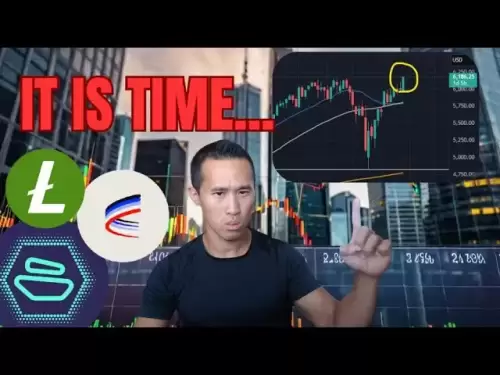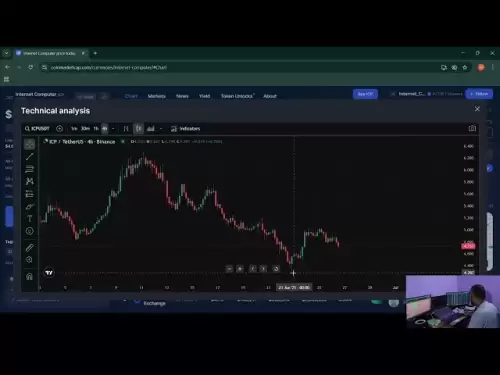-
 Bitcoin
Bitcoin $107,247.2038
-0.18% -
 Ethereum
Ethereum $2,424.7947
0.34% -
 Tether USDt
Tether USDt $1.0003
-0.02% -
 XRP
XRP $2.1171
-3.33% -
 BNB
BNB $645.6618
0.06% -
 Solana
Solana $141.5898
-1.32% -
 USDC
USDC $0.9998
0.00% -
 TRON
TRON $0.2710
-0.41% -
 Dogecoin
Dogecoin $0.1602
-2.99% -
 Cardano
Cardano $0.5553
-2.28% -
 Hyperliquid
Hyperliquid $36.3019
-2.42% -
 Bitcoin Cash
Bitcoin Cash $491.7212
2.04% -
 Chainlink
Chainlink $13.0810
-0.23% -
 Sui
Sui $2.6080
-5.06% -
 UNUS SED LEO
UNUS SED LEO $9.0040
-0.05% -
 Stellar
Stellar $0.2350
-3.06% -
 Avalanche
Avalanche $17.2294
-2.31% -
 Toncoin
Toncoin $2.8075
-1.05% -
 Shiba Inu
Shiba Inu $0.0...01121
-3.43% -
 Litecoin
Litecoin $84.2215
-0.32% -
 Hedera
Hedera $0.1429
-4.88% -
 Monero
Monero $312.2199
-0.90% -
 Dai
Dai $0.9997
-0.01% -
 Ethena USDe
Ethena USDe $0.9999
-0.02% -
 Polkadot
Polkadot $3.2973
-2.60% -
 Bitget Token
Bitget Token $4.4742
3.12% -
 Pi
Pi $0.5631
-10.10% -
 Uniswap
Uniswap $6.7817
-2.06% -
 Pepe
Pepe $0.0...09252
-3.74% -
 Aave
Aave $251.3830
-2.24%
Currency short-term skills tutorial k line
K-line patterns, chart formations, volume analysis, support and resistance levels, and risk management techniques provide valuable insights into price movements and potential trend reversals in financial markets.
Jan 11, 2025 at 03:59 am
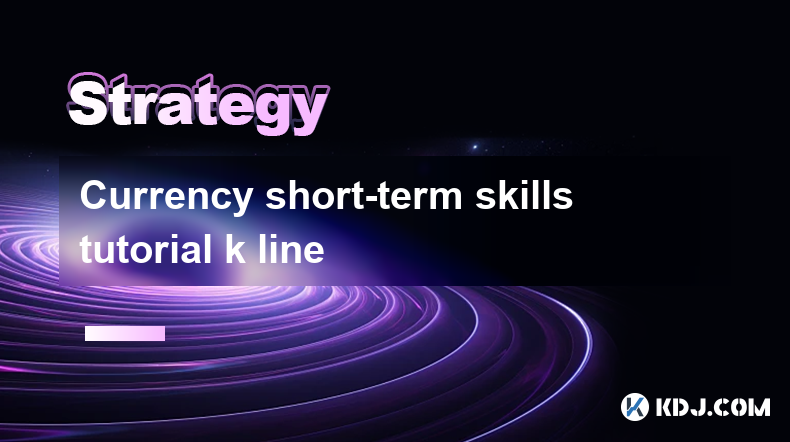
Key Points
- Understanding K-Line Patterns: Candlestick Types and Their Significance
- Identifying Trend Reversals: Bullish and Bearish Chart Formations
- Volume Analysis: Gauging Market Sentiment Through Trading Volume
- Support and Resistance Levels: Identifying Key Price Points
- Risk Management Techniques: Stop-Loss Orders and Trailing Stops
- Trading Psychology: Overcoming Emotional Biases
- Additional Resources and Best Practices
Step 1: Understanding K-Line Patterns
K-line charts are a fundamental tool in technical analysis, providing a graphical representation of price movements. Each candlestick represents a specific period of trading activity, typically ranging from 1 minute to 1 month. The pattern and shape of the candlesticks provide insights into market sentiment, momentum, and potential price trends.
Common Candlestick Types:
- Bullish Candlestick: A candlestick with a solid green body represents a day where the closing price is higher than the opening price, indicating an uptrend.
- Bearish Candlestick: A candlestick with a solid red body represents a day where the closing price is lower than the opening price, indicating a downtrend.
- Long-Tailed Candlestick: A candle with a long upper or lower wick suggests indecision in the market leading to a potential reversal.
- Spinning Top Candlestick: A candle with a small body and long wicks on both the upper and lower ends signifies indecision and consolidation.
Step 2: Identifying Trend Reversals
Chart patterns are a crucial element of K-line analysis that can identify potential trend reversals. These patterns occur when prices break out of established support or resistance levels, indicating a change in market momentum.
Common Reversal Chart Formations:
- Bullish Double Bottom Pattern: A double-bottom formation occurs when prices fall to a support level twice, creating a "W" shape on the chart.
- Bearish Double Top Pattern: The opposite of a double bottom, where prices reach a resistance level twice, creating an "M" shape.
- Head and Shoulders Pattern: This pattern includes a high point (head) with two lower high points (shoulders), indicating a potential reversal from an uptrend to a downtrend.
- Inverse Head and Shoulders Pattern: A head and shoulders pattern upside down, indicating a potential reversal from a downtrend to an uptrend.
Step 3: Volume Analysis
Volume analysis measures the number of shares or contracts traded over a given period. High trading volume tends to indicate that the market is active and that the price movement is more significant. Conversely, low volume can suggest indecisive or weak market conditions.
Trading Volume Interpretation:
- Increasing Volume on Uptrends: High volume accompanying an uptrend confirms the bullish momentum and increases the probability of the uptrend continuing.
- Decreasing Volume on Downtrends: Low volume during a downtrend indicates a lack of selling pressure, which can potentially lead to a trend reversal or a period of consolidation.
- Divergence Between Price and Volume: When prices are rising but volume is decreasing, it suggests that the uptrend may be weakening.
- High Volume Breakouts: Significant volume during a breakout from support or resistance levels often indicates a strong trend reversal.
Step 4: Support and Resistance Levels
Support and resistance levels are crucial points on a chart where prices have historically bounced back or stopped moving in a specific direction. They provide valuable information about potential areas of price reversal or consolidation.
Identifying Support and Resistance Levels:
- Horizontal Lines: Drawn at significant price levels where prices have repeatedly encountered resistance or support.
- Trendlines: Connecting multiple highs or lows, indicating the direction of a trend and potential points of price reversal.
Trading with Support and Resistance:
- Buy Orders near Support: Placing buy orders near a support level indicates a potential trend reversal or a bounce back.
- Sell Orders near Resistance: Placing sell orders near a resistance level indicates a potential sell-off or a trend reversal to the downside.
Step 5: Risk Management Techniques
Risk management is essential in K-line trading to protect against potential losses. Stop-loss orders and trailing stops are two common techniques used to limit risk and manage trades.
Stop-Loss Orders:
- Stop-loss orders are placed below the market price for long positions and above the market price for short positions.
- They are triggered when the market price reaches a pre-defined level, automatically closing the trade to prevent further losses.
Trailing Stops:
- Trailing stops move with the market price as a trade progresses.
- They are set at a specific percentage or point distance from the current price, protecting profits by adjusting the stop-loss level as the market moves in a favorable direction.
Step 6: Trading Psychology
Trading psychology plays a crucial role in K-line trading, as it can influence decision-making and undermine performance.
Overcoming Emotional Biases:
- FOMO (Fear of Missing Out): Avoid making impulsive trades driven by fear of missing out on potential gains.
- Greed: Refrain from holding onto losing positions too long in hopes of recovery, as it can lead to significant losses.
- Anchoring Bias: Avoiding fixating on a particular past price as it can hinder objective trading decisions.
Cultivating Discipline and Patience:
- Stick to a trading plan and avoid making impulsive trades.
- Have the patience to wait for high-probability trading opportunities rather than jumping into every trade.
- Accept losses as part of the trading process and learn from them to improve future trading decisions.
Step 7: Additional Resources and Best Practices
Additional Resources:
- Online courses and webinars on K-line trading
- Forums and communities for discussing trading strategies
- Technical analysis tools and software
- Historical price data for backtesting and analysis
Best Practices:
- Start with a demo account to practice trading before risking real money.
- Study historical price charts and identify patterns and trends.
- Keep a trading journal to track performance and identify areas for improvement.
- Stay up-to-date with market news and events that may impact price movements.
FAQs
Q. What are the different types of K-line candlesticks?
A. Bullish candlesticks have green bodies, while bearish candlesticks have red bodies. Long-tailed candlesticks indicate potential reversals, and spinning top candlesticks indicate indecision.
Q. How can I identify trend reversals using K-line charts?
A. Chart patterns such as double bottoms, double tops, head and shoulders, and inverse head and shoulders formations can indicate potential trend reversals.
Q. What is volume analysis and how can it be used in trading?
A. Volume analysis measures trading activity. High volume during an uptrend indicates strong momentum, while decreasing volume during a downtrend suggests a weakening trend.
Q. How can I protect myself from losses in K-line trading?
A. Risk management techniques such as stop-loss orders and trailing stops limit risk by automatically closing trades when specific price levels are reached.
Q. What is trading psychology, and why is it important?
A. Trading psychology refers to the emotional and mental aspects of trading. Overcoming biases such as FOMO and greed, cultivating discipline, and managing emotions can significantly improve trading performance.
Disclaimer:info@kdj.com
The information provided is not trading advice. kdj.com does not assume any responsibility for any investments made based on the information provided in this article. Cryptocurrencies are highly volatile and it is highly recommended that you invest with caution after thorough research!
If you believe that the content used on this website infringes your copyright, please contact us immediately (info@kdj.com) and we will delete it promptly.
- MAGACOIN, Ethereum, and Dogecoin: Navigating the Crypto Landscape in 2025
- 2025-06-27 08:50:12
- Shiba Inu, Portfolio, and Cryptocurrency: Navigating the Meme Coin Mania in 2025
- 2025-06-27 08:30:12
- Quantum Threat, Bitcoin Encryption, Experts Warn: Is Your BTC Safe?
- 2025-06-27 08:50:12
- Wall Street Pepe (WEPE) Price Up: The Meme Coin Making Waves on Wall Street
- 2025-06-27 08:50:13
- Bitcoin Rises as Altcoins Slump: A New Era for Crypto?
- 2025-06-27 08:50:13
- Dogecoin's Wild Ride: Support Levels and Open Interest Under the Microscope
- 2025-06-27 08:55:12
Related knowledge
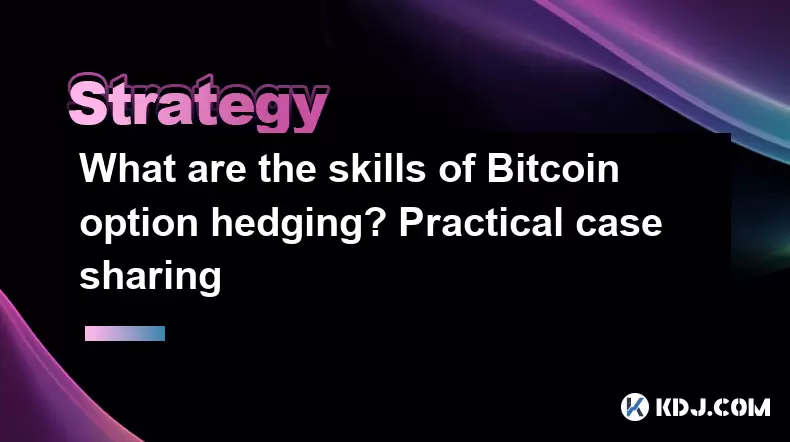
What are the skills of Bitcoin option hedging? Practical case sharing
Jun 24,2025 at 04:01pm
Understanding Bitcoin Option HedgingBitcoin option hedging is a risk management strategy used by traders and investors to protect their positions in the volatile cryptocurrency market. By using options, individuals can limit potential losses while retaining the opportunity for profit. In essence, it allows one to insulate against adverse price movements...
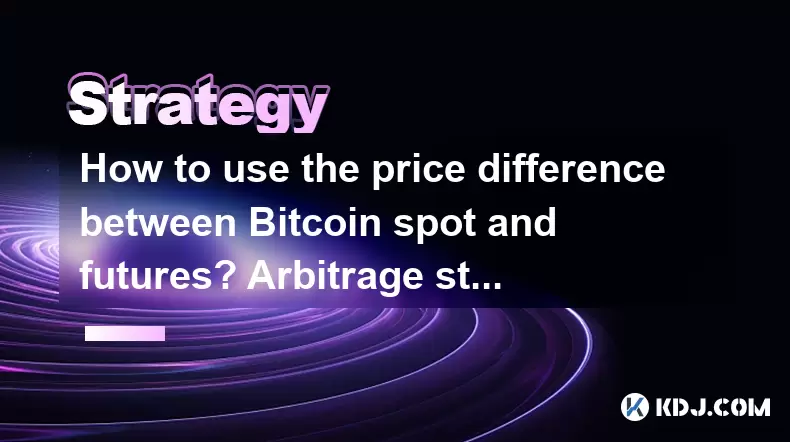
How to use the price difference between Bitcoin spot and futures? Arbitrage strategy
Jun 20,2025 at 02:56pm
Understanding Bitcoin Spot and Futures MarketsTo effectively leverage arbitrage opportunities between Bitcoin spot and futures markets, it's essential to understand the fundamental differences between these two types of markets. The spot market refers to the direct buying and selling of Bitcoin for immediate delivery at the current market price. In cont...
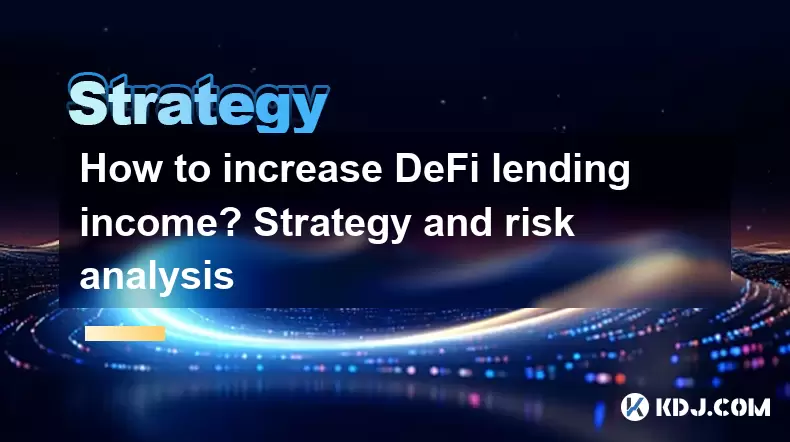
How to increase DeFi lending income? Strategy and risk analysis
Jun 24,2025 at 02:08pm
Understanding DeFi Lending and Its Income PotentialDeFi (Decentralized Finance) lending has emerged as a popular way to earn passive income in the cryptocurrency space. Unlike traditional banking systems, DeFi lending platforms allow users to lend their crypto assets directly to borrowers without intermediaries. The lenders earn interest based on the su...
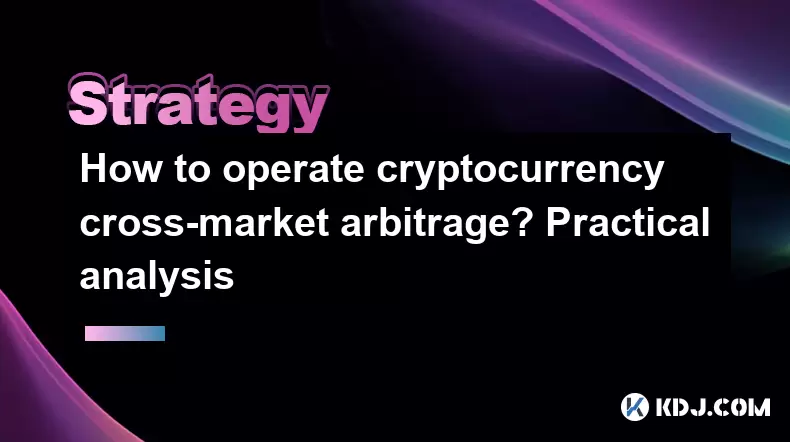
How to operate cryptocurrency cross-market arbitrage? Practical analysis
Jun 23,2025 at 04:01am
Understanding Cryptocurrency Cross-Market ArbitrageCryptocurrency cross-market arbitrage involves taking advantage of price differences for the same digital asset across different exchanges. The core idea is to buy low on one exchange and sell high on another, capturing the profit from the discrepancy. This strategy relies heavily on real-time market da...

How to make profits from high-frequency cryptocurrency trading? Sharing core skills
Jun 19,2025 at 05:07pm
Understanding High-Frequency Cryptocurrency TradingHigh-frequency trading (HFT) in the cryptocurrency market involves executing a large number of trades at extremely fast speeds, often within milliseconds. This method relies on small price discrepancies across exchanges or within a single exchange’s order book. Traders use complex algorithms and ultra-l...
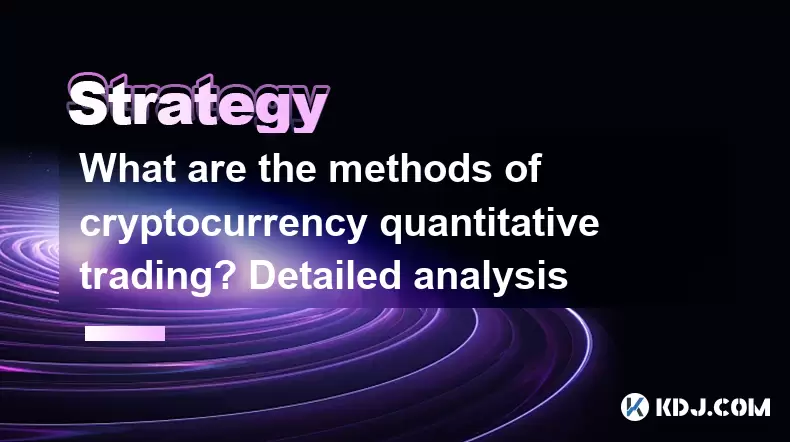
What are the methods of cryptocurrency quantitative trading? Detailed analysis
Jun 22,2025 at 11:07pm
Understanding the Core of Cryptocurrency Quantitative TradingCryptocurrency quantitative trading refers to the use of mathematical models and algorithms to execute trades in the digital asset market. Unlike traditional discretionary trading, which relies heavily on human judgment, quantitative trading leverages data-driven strategies to identify profita...

What are the skills of Bitcoin option hedging? Practical case sharing
Jun 24,2025 at 04:01pm
Understanding Bitcoin Option HedgingBitcoin option hedging is a risk management strategy used by traders and investors to protect their positions in the volatile cryptocurrency market. By using options, individuals can limit potential losses while retaining the opportunity for profit. In essence, it allows one to insulate against adverse price movements...

How to use the price difference between Bitcoin spot and futures? Arbitrage strategy
Jun 20,2025 at 02:56pm
Understanding Bitcoin Spot and Futures MarketsTo effectively leverage arbitrage opportunities between Bitcoin spot and futures markets, it's essential to understand the fundamental differences between these two types of markets. The spot market refers to the direct buying and selling of Bitcoin for immediate delivery at the current market price. In cont...

How to increase DeFi lending income? Strategy and risk analysis
Jun 24,2025 at 02:08pm
Understanding DeFi Lending and Its Income PotentialDeFi (Decentralized Finance) lending has emerged as a popular way to earn passive income in the cryptocurrency space. Unlike traditional banking systems, DeFi lending platforms allow users to lend their crypto assets directly to borrowers without intermediaries. The lenders earn interest based on the su...

How to operate cryptocurrency cross-market arbitrage? Practical analysis
Jun 23,2025 at 04:01am
Understanding Cryptocurrency Cross-Market ArbitrageCryptocurrency cross-market arbitrage involves taking advantage of price differences for the same digital asset across different exchanges. The core idea is to buy low on one exchange and sell high on another, capturing the profit from the discrepancy. This strategy relies heavily on real-time market da...

How to make profits from high-frequency cryptocurrency trading? Sharing core skills
Jun 19,2025 at 05:07pm
Understanding High-Frequency Cryptocurrency TradingHigh-frequency trading (HFT) in the cryptocurrency market involves executing a large number of trades at extremely fast speeds, often within milliseconds. This method relies on small price discrepancies across exchanges or within a single exchange’s order book. Traders use complex algorithms and ultra-l...

What are the methods of cryptocurrency quantitative trading? Detailed analysis
Jun 22,2025 at 11:07pm
Understanding the Core of Cryptocurrency Quantitative TradingCryptocurrency quantitative trading refers to the use of mathematical models and algorithms to execute trades in the digital asset market. Unlike traditional discretionary trading, which relies heavily on human judgment, quantitative trading leverages data-driven strategies to identify profita...
See all articles






















